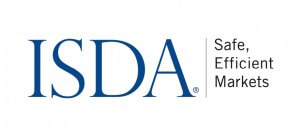ISDA publishes paper recommending adoption of entity-based reporting
In the context of the 31st Annual General Meeting in Tokyo, and in partnership with 12 other trade associations, the International Swaps and Derivatives Association, Inc. (ISDA) has published a paper today recommending an entity-based approach to derivatives trade reporting in a bid to cut costs and complexity for end users. The paper argues that […]

In the context of the 31st Annual General Meeting in Tokyo, and in partnership with 12 other trade associations, the International Swaps and Derivatives Association, Inc. (ISDA) has published a paper today recommending an entity-based approach to derivatives trade reporting in a bid to cut costs and complexity for end users.
The paper argues that “global adoption of an entity-based reporting framework – where sole responsibility for reporting is assigned to one counterparty via an automated hierarchy process – would help promote greater consistency in reporting standards and would lead to improvements in data quality”. Also, such approach should reduce operational complexity associated with current reporting requirements, cut costs, and eliminate the reporting burden on end users.
To further make its point, ISDA illustrated with the European example, where the aggregate expenditure for end users that have implemented the dual reporting framework is estimated to be in excess of €100 million.

Mandatory trade reporting regimes, key element of the derivatives market reforms agreed by the G-20 in 2009, are in place in most financial centers but harmonization is much needed as lack of consistency in the reporting rules between jurisdictions and variations in data reporting formats have limited the ability of regulators to aggregate exposures and spot possible systemic risks.
The twelve associations that contributed to the paper are: the Alternative Investment Management Association, the Association of Corporate Treasurers, the Australian Financial Markets Association, the US Chamber of Commerce’s Center for Capital Markets Competitiveness, the Coalition for Derivatives End-Users, the Global FX Division of the Global Financial Markets Association, ICI Global, the Investment Association, Managed Funds Association, the US National Association of Manufacturers, the Securities Industry and Financial Markets Association’s Asset Management Group, and Pensions Europe.
The paper can be read here.
ISDA and the Symbology Project
ISDA had already launched a project in September 2015 in efforts to improve data standardization across jurisdictions with help from Symbology Governance Committee, a consortium consisting of buy and sell-side market participants, vendors, platforms and trading associations, including Barclays, Bloomberg, UBS, Citigroup, Goldman Sachs, Deutsche Bank, ICAP-Traiana, and Thomson Reuters, among 18 participants.
The iniciative, Symbology Project, was designed to respond to new regulatory changes seen since the financial crisis of 2007-2008, from the Dodd Frank Act to MiFiD II, established to increase transparency over OTC derivative markets and to reduce systemic risk. Lack of global data harmonization has been an issue ever since, becoming a burden to both regulators and regulated institutions, causing higher costs and complexity as well as less effectiveness. Symbology Project aims to develop an open-source standard derivatives product identification system to be applied across all derivatives facilities.









